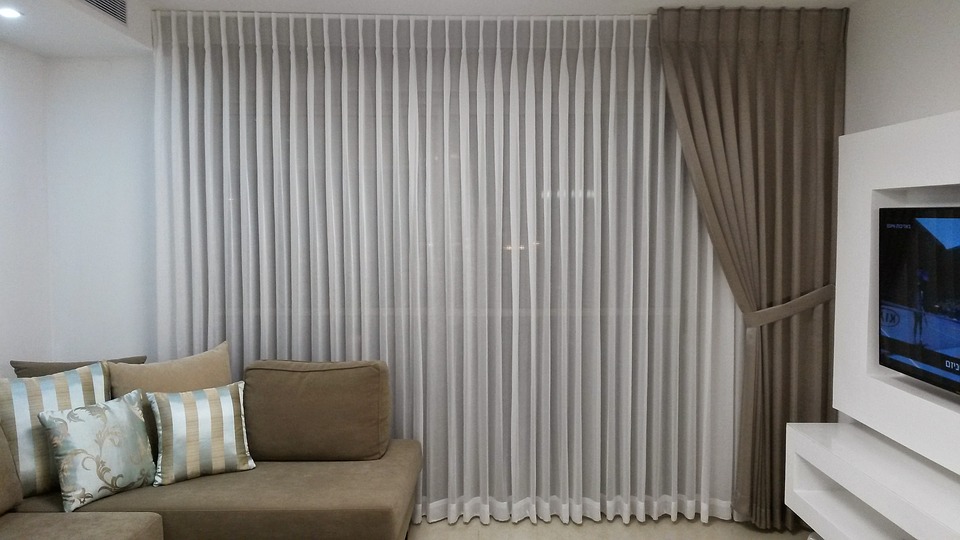Overcoming the threat of poor curtain habits
Regardless of whether your choice is traditional or modern, a well-fit drapery set-up will provide your space with a distinct and orderly area. You can hang practically anything over your windows to shut out light and allow privacy, but they won’t give the illusion of a different preferred room size, or correct awkwardly installed windows – nor any of the other advantages a proper drape treatment provides. But you can get your curtains just right, and here are a few tips to help insure your success…
In nearly any case, the best place to hang a drapery is at the ceiling line, right at the top or just below a molding or bulkhead, while letting it fall down to the floor. Besides providing the longest possible appearance for the curtains, it also makes the room look larger.

No matter the size or placement of the windows – high, low, big, small, odd-shaped – a pair of floor-to-ceiling panels on each side will sharpen the look ideally, particularly when shut. Having the curtains land about a quarter inch above the floor is the most common and preferred style, but allowing them to gather slightly upon the floor provides a certain charm that appeals to many. The latter is a style employed by many different themes, from gothic to romantic.

Certainly, a single long curtain rod or track is the most refined option and it works for nearly all styles, such as that of a bay window, or even for a wall with windows and glass doors. You may just as easily curtain an area from wall to wall. By doing so you may cover undesirable sights, such as poor window placement, while creating a very elegant backdrop that will help accentuate other design elements. In such a scenario, sheers are recommended. They allow light to filter but don’t weigh down the room, allowing a loose and airy quality.

That’s not to say that solid curtains don’t look great or serve their own purposes. They are just as effective wall-to-wall and look particularly great with furniture layered in front of them. You may even overlap art or a mirror out front. When using dark drapes it is important to balance the room stylistically by having something like-shaded of equal size on the opposite wall, too.
Of course the actual width of a curtain rod will not be equal to the literal width of a curtain panel. Remember, a curtain has fullness and is ‘stacked’. The fullness of a fabric is determined by the width needed to create a nice natural wave. Typically, the fullness equates to 2 1/2 times the actual rod width. For a fuller appearance that conveys greater luxury, you may triple the fabrics rod width. Arguably, this approach is most effective and easy-to-use with the more flexible fabric or sheers.
When opening curtains bunch up, it is known as “stacking”. The fabric squeezes together nearly as tightly as possible, but it will only compress as much as it can. They take up considerably more space on the rods ends when they are opened. If you need a window to be exposed completely, the rod and curtains will actually have to extend beyond the width of the window, allowing the curtain to stack outside of the windows perimeter.

Exactly how much stacking space needed will fluctuate profoundly by how thick the fabric is. A light unlined curtain may need 10 to 15% of the panel width to stack, but a heavier one will use as much as 20 to 25%. By doing the math, you learn that a drape wide enough to reveal an entire window needs a rod or track that is larger by exactly the previously determined percentages. Obviously in tighter rooms where there isn’t much space for stacking, sheer curtains may be used as they use considerably less room when opened. Plus they provide a nice breezy vibe to any open room.
On the other hand, you can simply work with the given circumstances when curtains don’t open to completely reveal the whole window. By choosing a deep fabric that blocks light effectively you establish a stylish look, providing that you are able to operate the window behind them freely. Remember, stacked curtains appear dramatically different when they are closed. When picking out curtain fabrics try to look at samples that are large enough to fold so you may see how they appear “stacked”. By doing so you’ll have a more accurate expectation for the stacked curtains’ space consumption.
Of course, another choice that is extremely popular is the in-window shade. In lieu of drapes, it can appear ultra-modern in either solid colors or patterns. It sits inside the window frame and needs no additional space. It stacks on top and thinner fabric will allow the majority of the window to be exposed when the shade is up.
For the most part, all homes are built with a standard 8-foot ceiling. This means it is quite easy to install perfectly fitting curtains right out of the package! Since today’s manufacturers make choosing and set up of curtains so easy, it really should be “curtains” for you!


